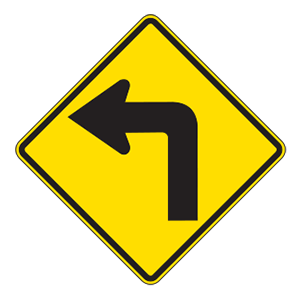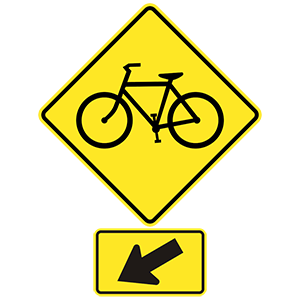2025 Wisconsin Permit Test 11
The following questions are from real DMV written tests. These are some of the actual permit questions you will face in Wisconsin. Each permit practice test question has three answer choices. Select one answer for each question and select "grade this section." You can find this button at the bottom of the drivers license quiz. For a complete list of questions and answers for Wisconsin please visit https://cheat-sheets.dmv-written-test.com/en/wisconsin/car.
Number of Tests
Number of Question
Passing Score
1. When the road is marked with a solid yellow line and a broken yellow line, with the broken line next to your lane, you may pass:
Explanation
When there is a solid yellow line and a broken yellow line in the center of the road and the broken line is next to your lane, you may cross the lines to pass if there is no oncoming traffic.
2. This sign means:

Explanation
Warning signs prepare drivers for upcoming road conditions and hazards and are usually yellow with black markings. This sign warns drivers that there is an upcoming sharp turn and that they should lower their speed accordingly.
3. Distracted driving is:
Explanation
Distracted driving is extremely risky behavior that puts not only you and your passengers in danger, but also endangers pedestrians, bicyclists, and other motorists sharing the road. Focused attention on driving helps to prevent crashes.
4. This road sign means:

Explanation
This sign (with the arrow below) indicates the location of a bicycle crossing/path. Drive with caution around this sign because bicycles likely regularly cross or ride beside traffic in the area.
5. If worried, nervous, angry, or crying, a driver:
Explanation
You may not be able to drive well if you are worried, excited, crying, angry, or depressed. Emotions can distract you from your driving because your mind is focused on something else. Take time to calm down and get focused before driving.
6. When a car with bright headlights drives toward you at night, you should:
Explanation
To avoid being blinded when driving at night, do not look directly at the headlights of oncoming cars. Instead, look toward the right edge of the road until the oncoming driver has passed.
7. Changing from one lane to another is best done:
Explanation
